Spring 1902
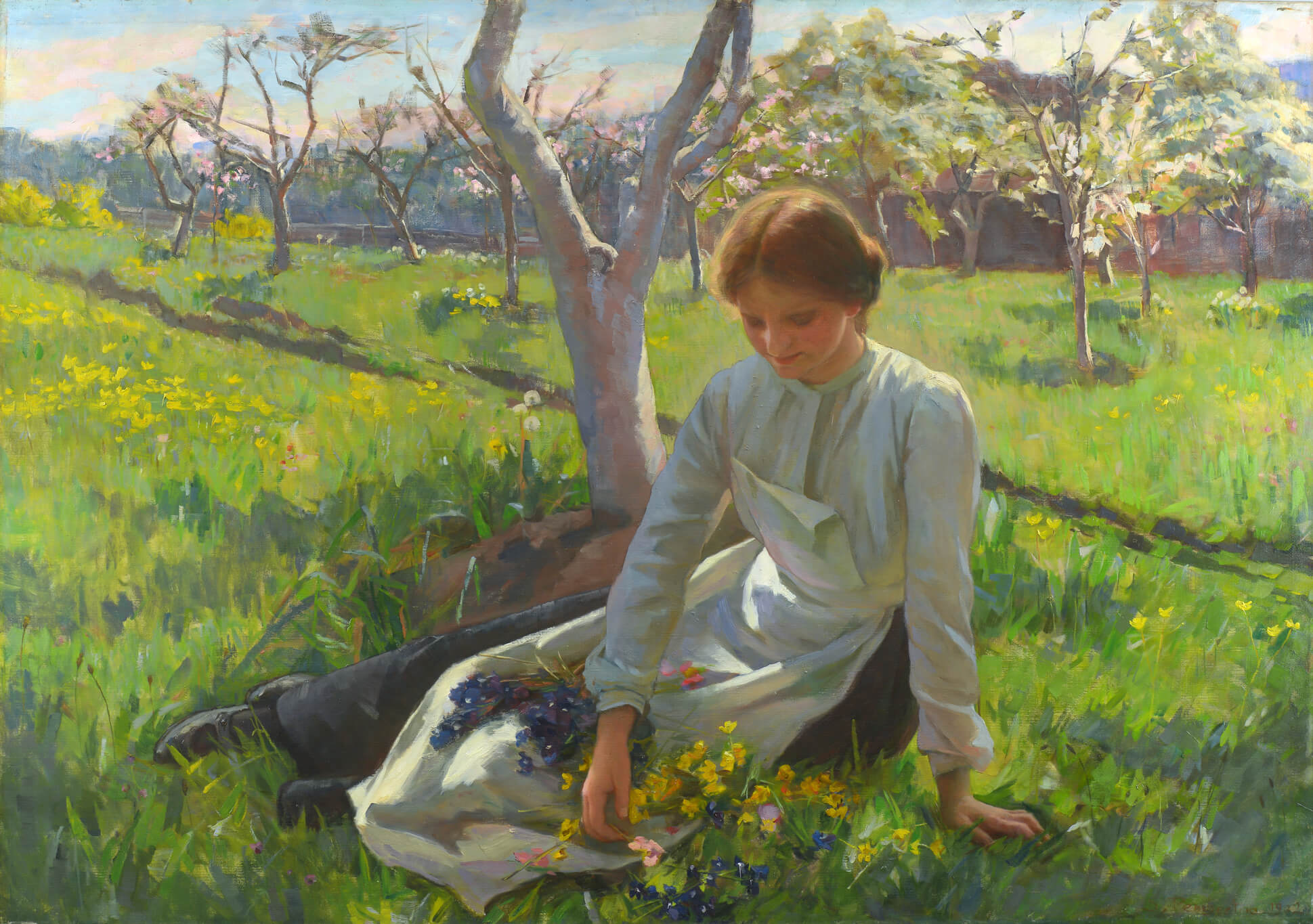
Sophie Pemberton, Spring, 1902
Oil on canvas, 100.5 x 142.5 cm
Art Gallery of Greater Victoria
In this painting, a young woman sits in dappled sunlight alongside a bouquet of wildflowers. She wears a serviceable skirt and a long-sleeved blue blouse, with a white apron overtop. Her clothing suggests she is a household servant, but the identity of the model is not known.
Despite a bout of poor health that sent her to a California sanatorium in early 1901, Pemberton was productive during her two-year stay in Victoria from 1900 to 1902. In the summer of 1901 she made a series of sketches depicting a young woman who is dressed identically in each one. The first canvas she completed, John O’Dreams, 1901, shows her seated on the grass in the chequered shade of summer, an open book on her lap. A young boy lies near her, perhaps listening, but with a faraway gaze.
In 1902 Pemberton repurposed her model in four more canvases. The woman is always contemplative, but in Autumn she appears beside an overturned wooden slat basket and a pile of fallen pears. In Untitled she sits in an English garden. Pemberton reworked Autumn five years later and titled it Penumbra, 1907, placing the figure between light and shade in a scene that perhaps also references emotional turmoil.
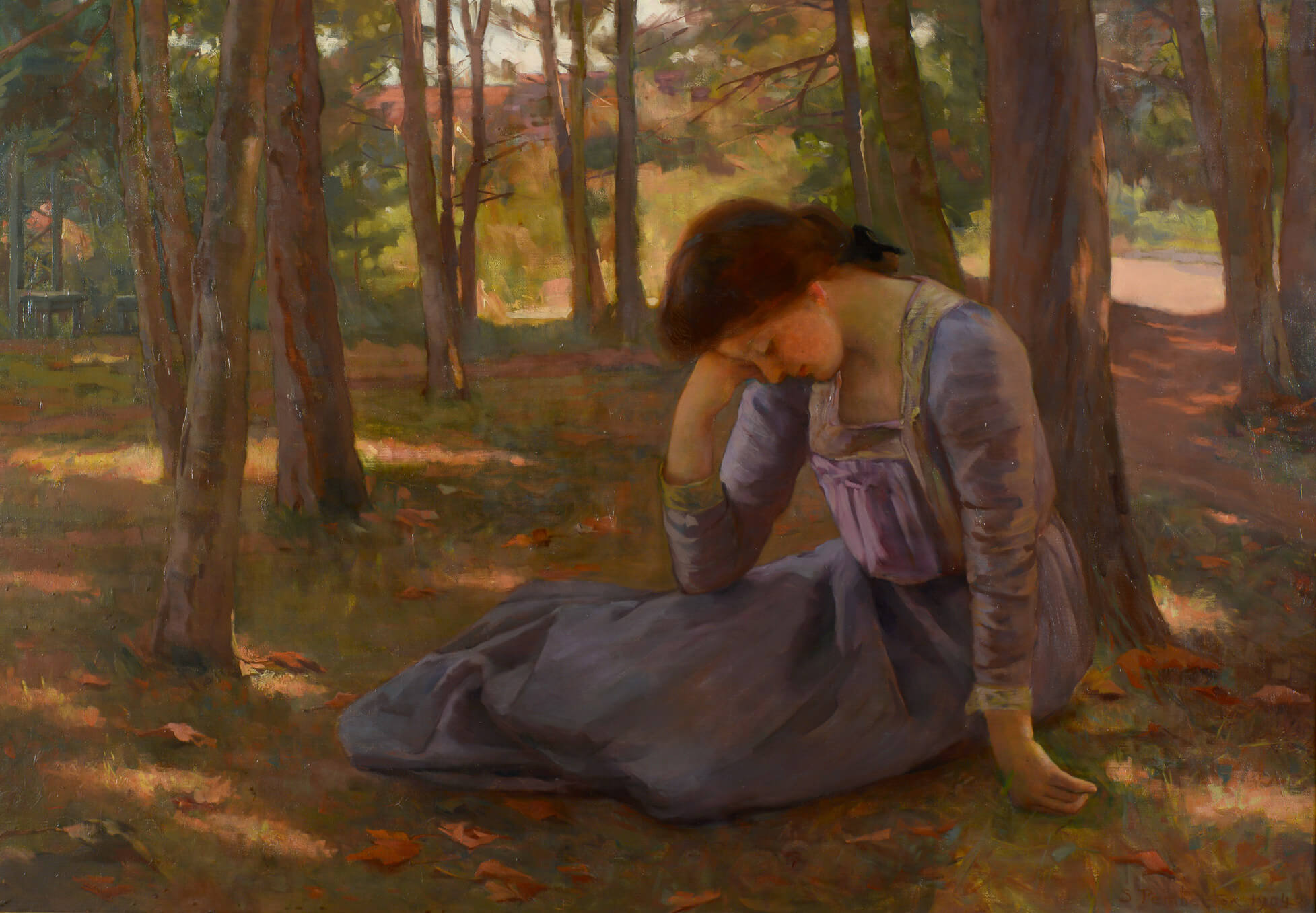
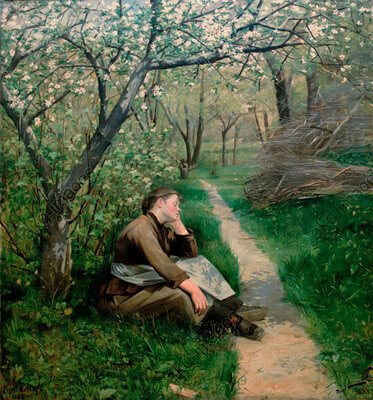
Spring is the strongest composition in the series and reveals Pemberton’s command of both portraiture and landscape as it blends the figure into an outdoor setting—the technique she used in Little Boy Blue, 1897. A contemporary review notes that Spring shows “clearly the influence of the French school on Miss Pemberton’s style. The coloring is subdued and the relations between light and shade most subtly rendered.” Pemberton was now working in an Impressionistic style, fascinated with the play of light: the background is rendered in loose, imprecise brush strokes, though, in the Canadian style, the figure is delineated more clearly.
Pemberton sent this painting for an exhibit in Newcastle, England, in 1903, and then to British Columbia in 1904, first in Victoria at the Provincial Agricultural Exhibition, along with another thirty of her works, followed by a solo showing at the Blomfield Studio in Vancouver. It then travelled back across the Atlantic with her to England, where she kept it in her collection, displaying it prominently wherever she lived. When she returned to Canada in 1949, Spring appeared in a series of retrospectives during her lifetime and, later, in exhibitions of Canadian Impressionism.
Marie Bashkirtseff (1858–1884), an earlier and high-profile Russian student at Académie Julian, painted Spring, 1884, a scene with similar components. The description in her posthumously published diary mirrors Pemberton’s Spring: “A young woman leaning against a tree, smiling, her eyes closed as if in a beautiful dream, and all around a delicate landscape tenderly green, pale roses, apple trees. I want the sun in it, and I’ll do it at Nice in an orchard.” Bashkirtseff’s diary was read by generations of aspiring artists, and Pemberton would certainly have known it.

 About the Author
About the Author
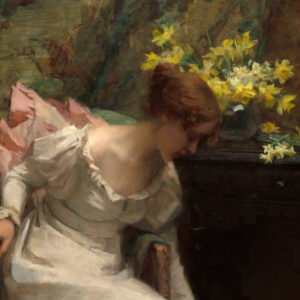 More Online Art Books
More Online Art Books
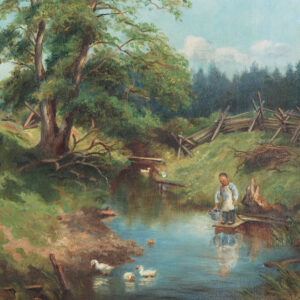 Acknowledgements
Acknowledgements